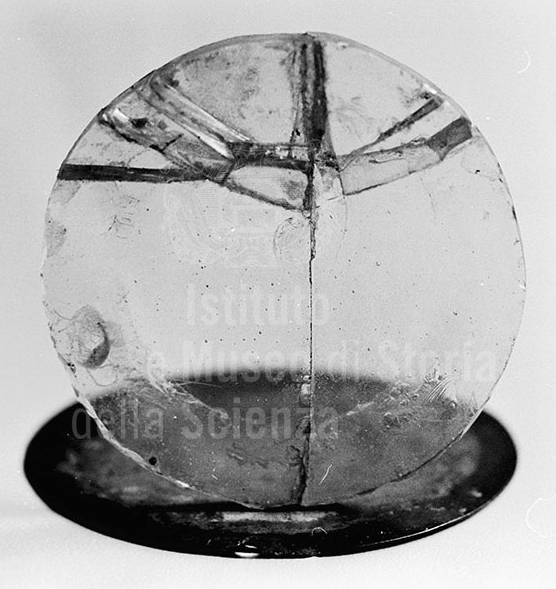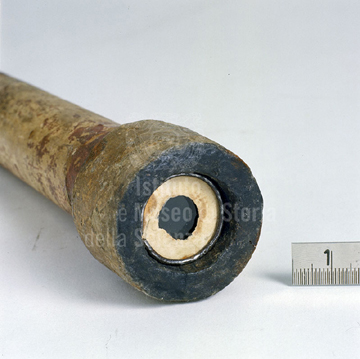
The lens removed from its ornamental mount (left), from
http://brunelleschi.imss.fi.it/telescopiogalileo/etel.asp?c=50016
Test results on this lens. Evenly spaced and uniform straight lines would indicate perfect optical figure (right) - this lens would be pretty good in its center except for the discontinuity where it is broken, from

